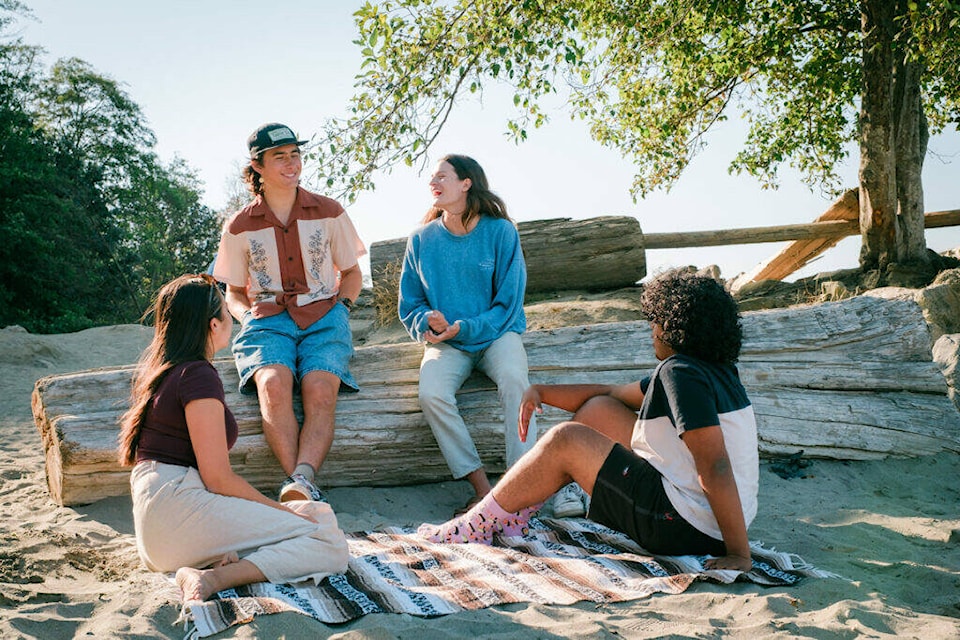The pandemic had ill effects on the mental health of young adults and a new study suggests that cities are moving slow to adapt public greenspaces to fit the needs of the 91ôÐêáòÆóçmissing middle.91ôÐêáòÆóç
A UBC study published Thursday (Nov. 17) found that those aged 15-24 are often left out of being considered when urban planners design their parks, especially when compared to the needs of children and the elderly.
91ôÐêáòÆóçWe91ôÐêáòÆóçre really good at providing playgrounds for younger children or including things like benches in parks for older adults,91ôÐêáòÆóç researcher Sara Barron said in a news release.
91ôÐêáòÆóçBut when it comes to youth and young adults, there91ôÐêáòÆóçs a noticeable lack of intentionally designed spaces where they can just be themselves.91ôÐêáòÆóç
Barron and fellow researcger Emily Rugel developed a three-pronged tool to better judge how young adults will utilize parks and greenspaces.
Young people respond better to parks that are well-tended and feel safe. Rugel says safety is a primary concern for young women who use parks.
91ôÐêáòÆóçThat91ôÐêáòÆóçs definitely [an area] where we need to think about what safety feels like for young adults versus other people who might be in a green space.91ôÐêáòÆóç
READ MORE:
When it comes to diversity, parks with a variety of plants and available activities scored higher, the study found. There91ôÐêáòÆóçs also a demand amongst young people for quiet spaces that are more isolated.
91ôÐêáòÆóçSome people will kind of seek that retreat,91ôÐêáòÆóç Rugel said. 91ôÐêáòÆóçBut many other young adults want a place where they can come together with their friends, play games and have a loud conversation that they91ôÐêáòÆóçd get yelled at for in a library.91ôÐêáòÆóç
In exploring the parks and laneways of Melbourne and Sydney in Australia as case studies, Rugel and Barron found very few parks scored highly in all three areas of order, diversity and seclusion. The conflicts between the three is a challenge for cities wishing to adapt the framework.
91ôÐêáòÆóçThere will be tensions between young adults and other park users,91ôÐêáòÆóç Rugel said. 91ôÐêáòÆóçPeople who may want to use a big open space to play a game [conflict] with people who want to be sitting there and having a picnic91ôÐêáòÆóçÎThat91ôÐêáòÆóçs definitely a tension that we think can be easily resolved, particularly by creating different areas that will provide options to people who butt heads when they91ôÐêáòÆóçre there for different purposes.91ôÐêáòÆóç
However, there is opportunity to improve smaller 91ôÐêáòÆóçpocket parks91ôÐêáòÆóç and even alleys to better serve young people 91ôÐêáòÆóç such as Melbourne91ôÐêáòÆóçs laneways that feature street art, plants and shrubbery.
91ôÐêáòÆóçIf you see a place where there91ôÐêáòÆóçs graffiti, that means there91ôÐêáòÆóçs an opportunity for a fabulous mural,91ôÐêáòÆóç Rugel said. 91ôÐêáòÆóçThat would contribute to the sense of order and the sense it91ôÐêáòÆóçs a place that91ôÐêáòÆóçs well cared for.91ôÐêáòÆóç
The study finds that greenspaces can positively impact mental health by relieving stress and strengthening social ties. During COVID restrictions, a lack of access to outdoor spaces had direct impacts on young people91ôÐêáòÆóçs mood, ability to pay attention and to focus on important things.
Rugel hopes the approach is used as a checklist to improve parks in Metro Vancouver and other cities in the area.
dillon.white@missioncityrecord.com
Like us on and follow us on .



